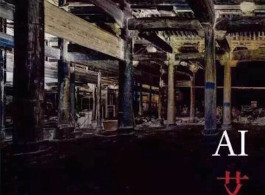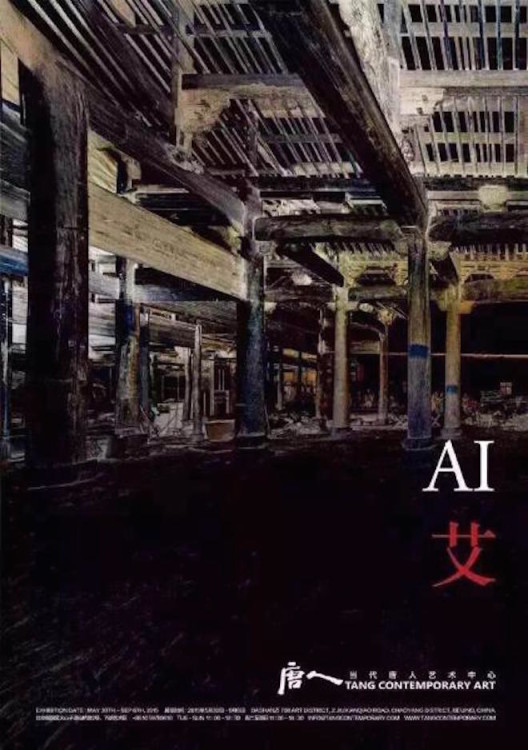Artist: Ai Weiwei
Curator: Cui Cancan
Duration: June 6 – September 6, 2015
Opening: 2pm June 6, 2015
Venues: Galleria Continua, Tang Contemporary Art
Galleria Continua is thrilled to present in its exhibition space in Beijing the show Ai Weiwei. For the first time in his life, the famous Chinese artist designs and realizes a solo exhibition in his home country, following the entire development of the project from conception to realization in situ. The show represents a new “challenge” faced by the artist through what he defines as a “learning process, an on-going project, which is at the same time a struggle and above all, the organisation of an actual organism.
Wang Jiaci (Wang family ancestral hall) was an ancestral temple of Ming age, dedicated to the cult of Wang Hua, an important prince who was reigning during the 6th century A.D., taken as reference by all future dynasties, from Tang to Qing. For hundreds of years, the ancestral temple was considered a sacred place, destined to host offerings and cult ceremonies for ancestors, as well as a place for holding important social activities or meetings and those concerning the Wang family. Today Wang Jiaci is the hub of Ai Weiwei’s monumental project, an ancient building which was disassembled into more than 1500 pieces and meticulously re-built inside two exhibitive areas: Galleria Continua and Tang Contemporary Art, crossing the wall that divides the two galleries. The peculiarity of this traditional architecture lies in its structure consisting of columns and wooden beams, completely independent and detachable from the walls. This building technique, recently developed also in the West, was used in China over one thousand years ago and is strictly related to the Chinese philosophy and thought.
The choice to bring a predominant installation with imposing structure, cultural importance and aesthetic beauty inside an exhibition and two galleries, aimed at setting conditions of “totality” where the environment, which is no longer physical but also temporal and social, becomes an essential aspect of the work. Thus, visitors become part of the project, and their behaviour forms an inseparable part of it. The visitor, invited to enter the two exhibitive areas at different times, is forced to see the work only partially, without ever being able to view and enjoy the entire architectural structure from a single point. The public is invited to walk inside a “social context” rather than a visual one, a condition in which the architectural object was deprived of its original use, thus acquiring a new shape and meaning. The behaviour of those who live this experience becomes, therefore, the focus of the entire project, and even the work itself. Ai Weiwei focuses, once again, on the importance of human actions within a particular event, not only of artistic, but also of social and public character.
The exhibition conceived for the two galleries represents an ambitious process that exalts the complex nature of the artist and key points around which his art revolves: an obsequious respect for the Chinese tradition combined with the great ability to offer ancient themes in modern key, in addition to constant social and political awareness.
An important area of the exhibition is indeed dedicated to describe this huge process. Documentation and filing are essential activities, which represent the common thread of the entire Ai Weiwei’s research and career. Through documentation, the artist assigns a name and temporal and historical location to objects and people, re-asserting their dignity and value. At the same time, documenting and proposing the material stimulates different reactions in human beings, it stirs their imagination, fears and feelings. The same information can be perceived by each individual in a different way, producing different reactions. Thus, the documenting activity offers a second nature to objects and people, two different realities, two different lives.
A lot has been written about Ai Weiwei’s life, in many different languages – about the early hardship experienced by his family and about how fundamental it was for Ai Weiwei to redeem his father through his work and his practicing of intellectual freedom.
Ai Weiwei asserts the need of an active effort on different fronts, from art, to architecture, literature, to documentation cinema, through to the action on social media and public protests. The various spheres of action aim anyhow at attaining a single and all-inclusive goal: freeing individual expression from any type of imposition to favour reciprocal exchange and sharing among individuals.
The exhibition at the Galleria Continua and Tang Contemporary Art sets out to focus on Ai Weiwei in all his complexity, a man for whom art is a way of living that is inextricably bound up with the authentic circumstances of his time.




